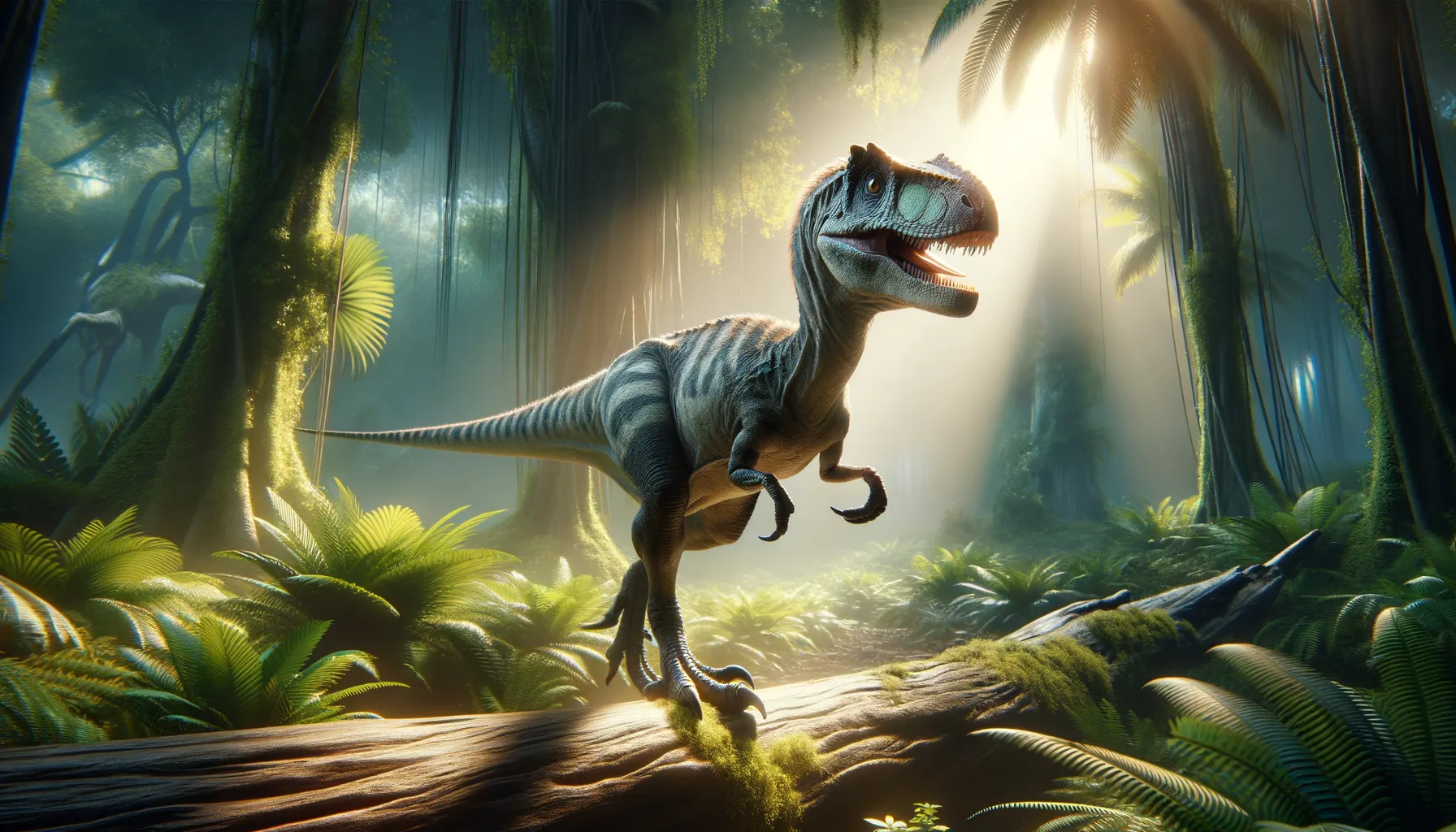
Nuthetes
Swift predator from the ancient past!
Period
Cretaceous
Length
Estimated to be about 2 meters long.
Height
Approximately 1 meter tall.
Weight
Around 20 to 40 kilograms.
Nuthetes was a small theropod dinosaur that roamed the earth during the Cretaceous period. Its first fossils were uncovered in England in 1854, painting a picture of a swift, predator-like creature. Weighing as much as 40 kilograms and reaching about 2 meters in length, Nuthetes relied on its agility for survival. Much of its lifestyle and behavior can be inferred from its close relatives, offering a fascinating glimpse into the life of a small, intelligent predator.
Diet
Nuthetes was likely a carnivore, preying on small animals, insects, and possibly fish. Its sharp teeth suggest it could efficiently tear through flesh, making small prey its primary nutrition source.
Hunting
Hunting strategies would align with those of modern small predators, relying on agility and stealth. Its agility could have enabled Nuthetes to ambush its prey, striking swiftly to secure its meal.
Environmental challenges
As a small dinosaur, Nuthetes faced numerous predators, forcing it to develop keen senses for survival. The changing landscapes of the Cretaceous period meant evolving to different habitats to find food and shelter. Climatic fluctuations during its era could drastically alter its environment, pushing Nuthetes to adapt continuously.
Speed
Likely swift, based on slender build.
Lifespan
Estimated around 15-25 years.
First discovery
Found in the United Kingdom, 1854.
Fun Facts
- Nuthetes was a small dinosaur that lived during the Late Jurassic period, around 145 million years ago.
- The name 'Nuthetes' means 'watcher' or 'overseer,' which reflects its keen sense of awareness.
- It was first discovered in the famous Purbeck Limestone of England, a region known for its rich fossil deposits.
- Nuthetes is believed to have been a theropod, a group of bipedal, carnivorous dinosaurs that also includes the more famous Tyrannosaurus rex.
- The exact size of Nuthetes is not well known, but it is thought to have been a modestly sized predator, likely no bigger than a modern-day fox.
- Its discovery has been important in understanding the diversity of small theropods in Europe during the Jurassic period.
- Though not as well-known as other dinosaurs, Nuthetes provides valuable insights into the ecosystems of its time.
Growth and Development
Nuthetes likely grew swiftly to reach maturity, enabling it to evade predators early in life. Its development stages might have mirrored those of modern reptiles, with growth spurts aligned with hormonal shifts. Fossil evidence suggests it developed behavioral maturity, equipping it with survival skills rapidly.
Habitat
Nuthetes inhabited regions rich in vegetation, acting as excellent cover for stalking prey. The environment would have ranged from forests to wetlands, providing diverse resources for its sustenance. Access to water sources was crucial, influencing Nuthetes' regional spread and migration patterns.
Interaction with other species
Nuthetes probably interacted with various species, both competitors and predators, in its ecosystem. Its presence might have affected local prey populations, maintaining a balance in the food chain. It likely had to navigate both cooperation and conflict within its social groupings to establish territory.
Natural lifespan
Such dinosaurs lived naturally for about 15-25 years.
Reproduction
Nuthetes reproduced by laying eggs, similar to other theropods of its time. Nesting sites would have been strategically chosen for safety and environmental factors. Parental care might have been minimal, with hatchlings rapidly learning to fend for themselves.
Social behaviour
Likely lived in small groups or pairs for hunting cooperation. Social structures could have revolved around access to food and mating opportunities. Territorial disputes were possible, resolved through displays or minor confrontations.
Fossil locations
Nuthetes fossils are primarily found in England, particularly Dorset. These locations provide valuable insights into the region's Cretaceous environment. Fossil evidence, although limited to scattered fragments, has been crucial in reconstructing Nuthetes' lifestyle.
